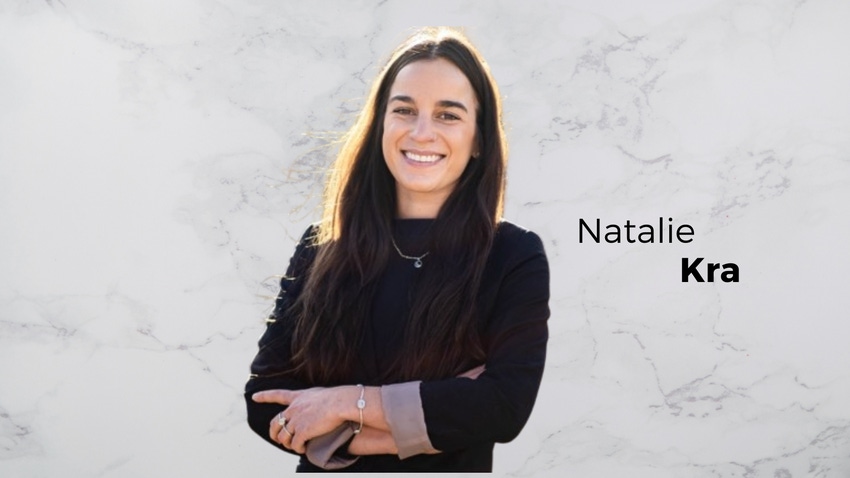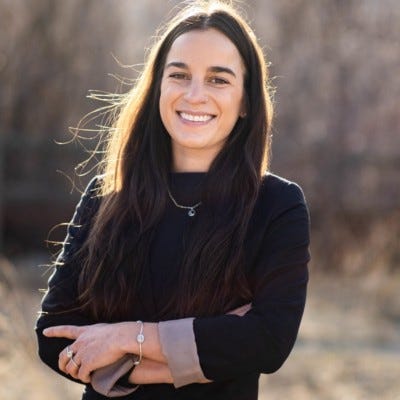Charting a sustainable future: Emerging trends redefine packaging
The global plastic crisis opens the opportunity to create a circular economy, starting with minimizing packaging waste. Learn more about this system.

In today’s world, it’s nearly impossible to completely avoid single-use packaging. Just about everywhere you look and shop, you will find products on shelves wrapped in some form of packaging. The lifecycle of this packaging often follows a linear trajectory: Materials such as petroleum, paper, pulp and other fibers are extracted from the earth to be used as inputs for packaging production. This packaging is then used to protect or contain an item up until its intended use, only to be disposed of after consumption and turned into waste. This linear design is fueled by resource- and energy-intensive inputs that are fated to become trash.
Much of the packaging you see around you is most likely made of some form of plastic—a fossil fuel-intensive material linked to both health and climate issues. Plastic is pervasive: Packaging is the biggest end-use market for plastic, accounting for over 40% of all plastic usage, according to the United Nations Environment Program. Additionally, half of all plastic produced is designed for single-use purposes, used just once, then thrown away. According to the Ellen MacArthur Foundation, this results in roughly 95% of the value of plastic packaging material, worth $80 billion to $120 billion annually, lost to the economy each year.
While many types of plastics are touted as recyclable, the reality is that of the 7 billion tons of plastic waste generated globally to date, less than 10% has been recycled due to fragmented recycling systems, lack of policy supporting infrastructure expansion and continued material innovation that has outpaced recycling technology. The shortfalls of our recycling systems coupled with the durable nature of plastic means much of plastic waste persists in communities, the environment and our waterways— all places they do not belong. So, while single-use plastics are versatile and often cheap, they come at a large expense when considering the impacts on our environment, health and economy.
Opportunity of the circular economy
Clearly, this is an imminent opportunity to rethink our relationship with packaging, plastics and waste more generally. Fortunately, there is growing momentum around the circular economy, a societal paradigm in which waste is minimized by redesigning systems to keep materials in circulation while simultaneously regenerating nature. Retaining the value lost to waste through more circular business models and product design is estimated to unlock $4.5 trillion in economic value, according to a 2015 report from Accenture Strategy. This can be accomplished through the reuse, recycling and repairing of items we use in our everyday lives. For packaging, this means reevaluating the inputs needed to create packaging materials, scaling recycling and reuse systems, and finding ways to nourish the planet— rather than polluting it—at end-of-life or disposal.
When evaluating the impacts of transitioning away from single-use plastic packaging, the Ellen MacArthur Foundation estimated in 2021 that a circular economy approach to the plastic sector “could reduce the annual global volume of plastics entering our oceans by more than 80% and generate savings of $200 billion per year” by 2040. In short, the opportunity is immense!
A circular economy approach to packaging requires a systemic lens. Multiple nodes along the packaging value chain must be engaged to drive holistic change. Circular activities for the packaging sector include several actions:
Ramp up recycling—Increase the capacity of recycling systems across the globe. In April 2022, Recycling Today reported there aren’t enough post consumer recycled (PCR) resins available to meet the packaging demand expected in 2025.
Material innovation—Scale innovative material development with a focus on renewable materials. Seaweed, mycelium, and sugarcane offer innovative approaches to packaging design.
Regular reuse—Normalize reuse systems. Globally, replacing just 20% of single-use plastic packaging with reusable alternatives is estimated to be an opportunity worth at least $10 billion, stated the Ellen MacArthur Foundation 2019.
Enable composting: Support composting infrastructure development. Only 27% of the U.S. population has access to industrial food waste composting while only 11% have the ability to compost packaging waste, the Sustainable Packaging Coalition reported in 2021. This has grown substantially in recent years but needs further development, as the expansion of composting infrastructure and implementation of compostable packaging applications will be an instrumental part of supporting the circular economy.
Pushing for policy—Advocate for policies that mandate producer responsibility. This includes fee structures proportionate to packaging production, PCR mandates and other legal mechanisms that encourage packaging redesign and recycling by the producers of packaging.
The business case for brands
As society continues to reckon with the packaging crisis, consumer packaged brands in particular hold a powerful position in enabling a more circular economy. There is great opportunity to align brand ethos with action through concerted efforts around circularity. Such efforts around product and packaging circularity are being shaped by a few key market factors:
Consumer preferences—Today’s consumer is increasingly informed and motivated by their values. As such, we continue to send spending trends that indicate consumers are aligning purchases with their values. Sustainable packaging continues to be a material focus for the avid consumer; in fact, according to the 2023 Buying Green Report, in the face of increasing prices due to global inflation, consumers are still increasingly willing to pay more for products in sustainable packaging. According to the study, 82% of respondents would be willing to pay more for sustainable packaging, up 4% from 2022, and 8% from 2021. This is a clear sign that despite an unstable economic environment, sustainability remains a consumer priority and that brands must be thinking about the ways they can continue to meet evolving consumer demands.
PCR commitments—Many CPG companies have made ambitious commitments for 2025-2030 to make their packaging more sustainable. These commitments often include the use of more post-consumer recycled (PCR) materials in both products and packaging.
However, to meet the growing demand for PCR, our recycling system needs to be enhanced and strengthened and the recovery of materials needs to be more efficient, effective and economical. According to a Recycling Today article from 2022, to achieve even just 15% PCR in packaging by 2025, 145 additional reprocessing facilities will need to be added to the U.S. recycling system.
The increased recovery of materials and keeping said materials in circulation for longer periods are core pillars of circularity so as companies work towards their 2025/2030 goals around PCR, they have a business imperative to play a more active role in shaping the circular economy in order to meet PCR targets.
Emerging legislation and EPR—As momentum around the circular economy continues to grow, lawmakers are expected to introduce or reintroduce notable numbers of Extended Producer Responsibility (EPR) bills related to packaging nationwide. EPR refers to a policy approach in which producers of packaging are held responsible for the lifecycle impacts of their packaging by increasing their involvement in the development of waste management systems (e.g., recycling, composting, disposal). Accountability may be through financial means (e.g., fees/taxes) and/or by engaging in the operational waste management services. The process can also move upstream, with the implementation of design-for-recyclability guidelines and by defining prohibited materials to further streamline the end-of-use processing of packaging.
The implementation of EPR legislation is already happening at the state level, with major bills being passed in California, Colorado, Maine, and Oregon, and introduced in others.
These policies have the potential to impact brands and consumers across the globe by encouraging the redesign of packaging to be more sustainable, incentivizing the minimization of waste, and increasing the capacity for circular material management.
Industry collaboration required
In 2013, OSC formed the Packaging Collaborative with the goal of removing single-use plastic packaging from landfills, oceans, and our planet by securing compostable and renewable flexible film structures for natural products.
Today, the Packaging Collaborative is composed of dozens of leading natural products brands and innovative material manufacturers, working collectively to address the challenges with single-use packaging in our industry.
Natural Products Expo West is a great time to come together, learn and be inspired to enact meaningful change. We invite you to join us as we discuss the themes of packaging policy, collaboration and innovation.
One Step Closer representatives will participate in Climate Day, 8 a.m.-7 p.m. Tuesday, March 12, and its corresponding Community Resource Fair, 11:15 a.m.-12:30 p.m. Marquis Ballroom NE at the Marriott.
The State of Packaging Policy in the U.S. featuring Jake Hebert, 10-10:45 a.m. Thursday, March 14, Grand Ballroom F at the Marriott.
The Power of Pre-Competitive Collaboration in Sustainable Packaging Development, 11 a.m.-noon, Grand Ballroom F at the Marriott.
At Innovations in Sustainable Packaging, 12:15-1 p.m. Thursday, March 14, Grand Ballroom F at the Marriott, OSC will announce the winners of its Packaging Innovation Awards.
Find other OSC2 events held offsite during Expo West here.
Natalie Kra is the program manager at Packaging Collaborative, a program of One Step Closer. She also serves as the manager of sustainability initiatives at Resonance, a firm that works collaboratively with clients to solve development challenges.
About the Author(s)
You May Also Like




